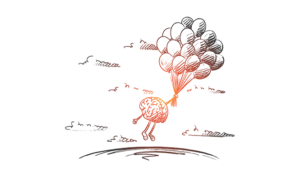Due to the COVID-19 pandemic, the loss of away sub-internships (Sub-I’s), also known as visiting rotations, is a significant disruption to the normal process of applying to residency. However, the loss of Sub-I’s has provided a few key benefits – notably in regards to finances, virtual opportunities and medical student wellness.
First, the monetary benefit of a lack of Sub-I’s and subsequent virtual interviews is immense. The financial burden associated with travel, housing, rent and any associated fees are now nullified. The total cost of the financial burden associated with the neurosurgery application cycle can approach $10,000, while away rotations themselves may reach upwards of $5,000-10,000 in some circumstances.1,2 These away rotations serve as an additional barrier to residency and often disproportionately affect low-income minorities. In 2018, 13% of medical students had a combined parental income of less than $45,600, whereas 51% had a parental income of greater than $121,000. This disparity highlights the potential advantages of students from higher-income backgrounds when factoring costs associated with away rotations and residency applications.3 Additionally, the financial strain of Sub-I’s increases the future financial burden placed on medical students, of whom 76% had prior educational loans in 2017 and accrued a median debt of $192,000.4 This is particularly impactful in neurosurgery, where training times and trainee pay lasts longer than for most other physicians. Additionally, some programs tend to consider the applicants who complete Sub-I’s at their institution more strongly than other applicants. Now, programs and applicants have the ability to consider their fits and opportunities more broadly.
Inevitably, with a lack of Sub-I’s, programs and applicants alike can now take additional measures to reach out and learn about each other; the pandemic has opened up a virtual landscape in an environment where the neurosurgical community is already using social media to create engagement within the profession and with the public.5 Training programs have now taken additional steps to appeal to applicants through various video-conference based information sessions. These opportunities have provided applicants an avenue to see many more programs than they would usually see on their two to three away rotations. This allows applicants to further assess culture and personality/fit over numerous sessions rather than limiting experiences solely to interviews. This cycle has also pushed program directors to reassess the typical applicant-selection process and will lead to more creative avenues to interact with medical students.
Along with monetary benefits and increased program communication, one benefit of a lack of Sub-I’s is the potential benefit to applicant wellness and time. Typically, neurosurgery applicants perform two to three away rotations in which they are essentially attending a month-long interview for each, during which their focus is on clinical experience. Instead, applicants this cycle will inevitably have much more free time than in typical years, which opens up the potential to pursue various different avenues that can enrich their neurosurgical experience. With research becoming more of a focus and publications to match in neurosurgery being higher than ever, this time allows applicants to dedicate to research, whether by finalizing papers in the pipeline, resubmitting rejected manuscripts and contacting both residents and faculty for additional projects.6 Many have taken advantage of this time, as demonstrated by a significant increase in the number of original submissions this year uniformly experienced across all neurosurgical journals.7 Besides research, applicants now have more time to prepare for an unprecedented, all-virtual interview season, and they can also take more time do do directed reading about the basics of neurosurgery in preparation for internship year. Finally, this extra time allows applicants to focus more on pursuing passions beyond medicine and taking care of themselves before a challenging, yet fulfilling seven-year residency.
All in all, the loss of Sub-I’s has undeniably changed how programs and applicants can mutually assess one another. The current situation has opened opportunities to reduce financial strain, allowed applicants to evaluate more programs, permitted programs to showcase their strengths more widely and afforded individuals more time to work on research and similar pursuits. While COVID-19 has undeniably changed many of the normal protocols in all aspects of life, there is potential to make improvement on existing models with the lessons learned. An attitude of challenging norms and seeking improvements has always defined neurosurgery; unexpected circumstances breed innovation, and an open mind toward the positive possibilities will allow the profession to adopt lasting changes for the better.
Read the Rebuttal

The Impact of Away Rotations: Cons
References
[expand title=”View All”]
1. Agarwal N, Choi PA, Okonkwo DO, Barrow DL, Friedlander RM. Financial burden associated with the residency match in neurological surgery. Journal of Neurosurgery. 2017;126(1):184-190. doi:10.3171/2015.12.JNS15488
2. Winterton M, Ahn J, Bernstein J. The prevalence and cost of medical student visiting rotations. BMC medical education. 2016;16(1):291. doi:10.1186/s12909-016-0805-z
5. Alamri A, Rogers P, Kearns C, et al. Social media for dissemination and public engagement in neurosurgery—the example of Brainbook. Acta Neurochir (Wien). 2019;161(1):5-9. doi:10.1007/s00701-018-3757-8
7. Lee JE, Mohanty A, Albuquerque FC, et al. Trends in academic productivity in the COVID-19 era: analysis of neurosurgical, stroke neurology, and neurointerventional literature. Journal of Neurointerventional Surgery. Published online September 30, 2020. doi:10.1136/neurintsurg-2020-016710
[/expand]
[aans_authors]








